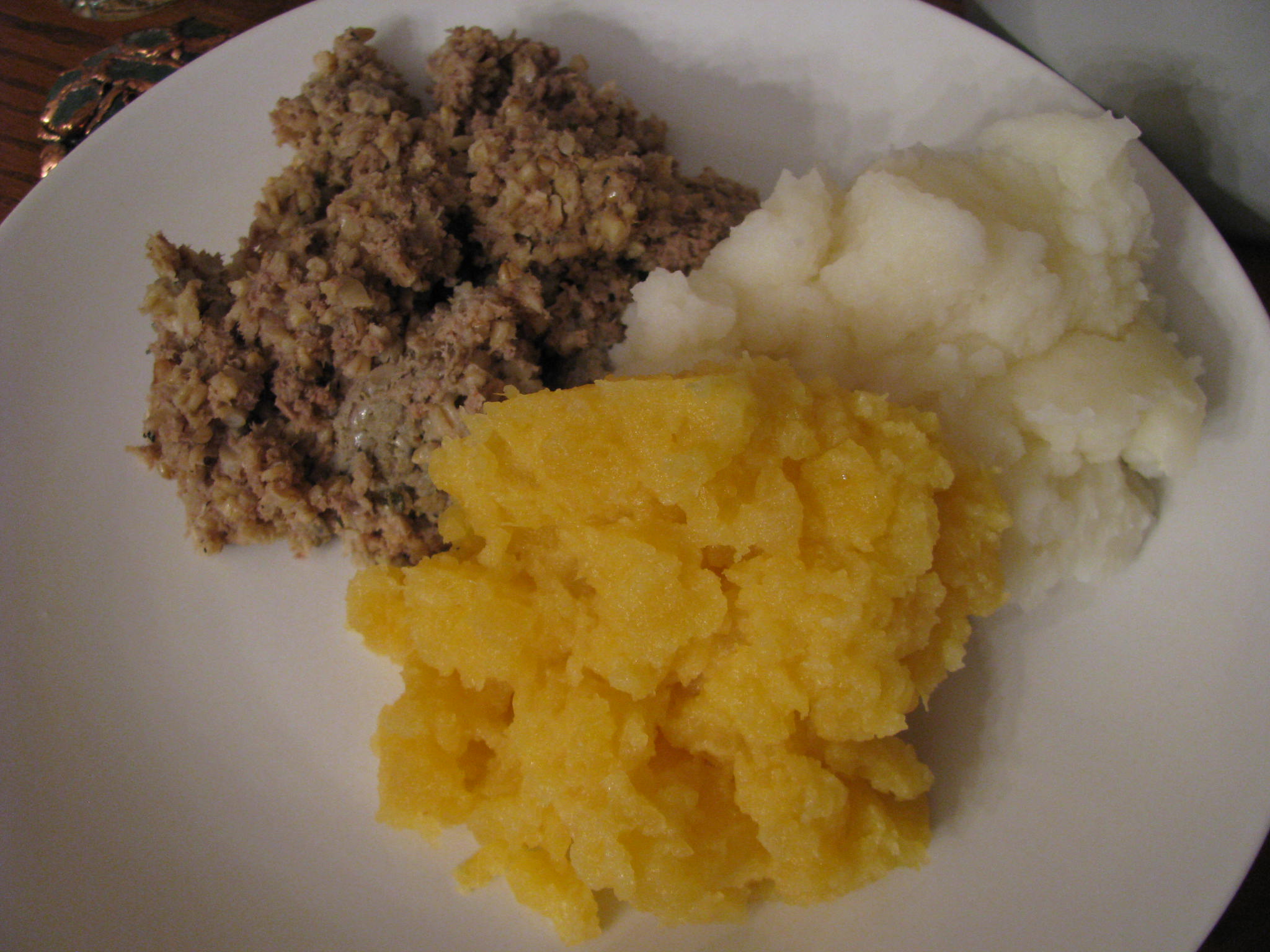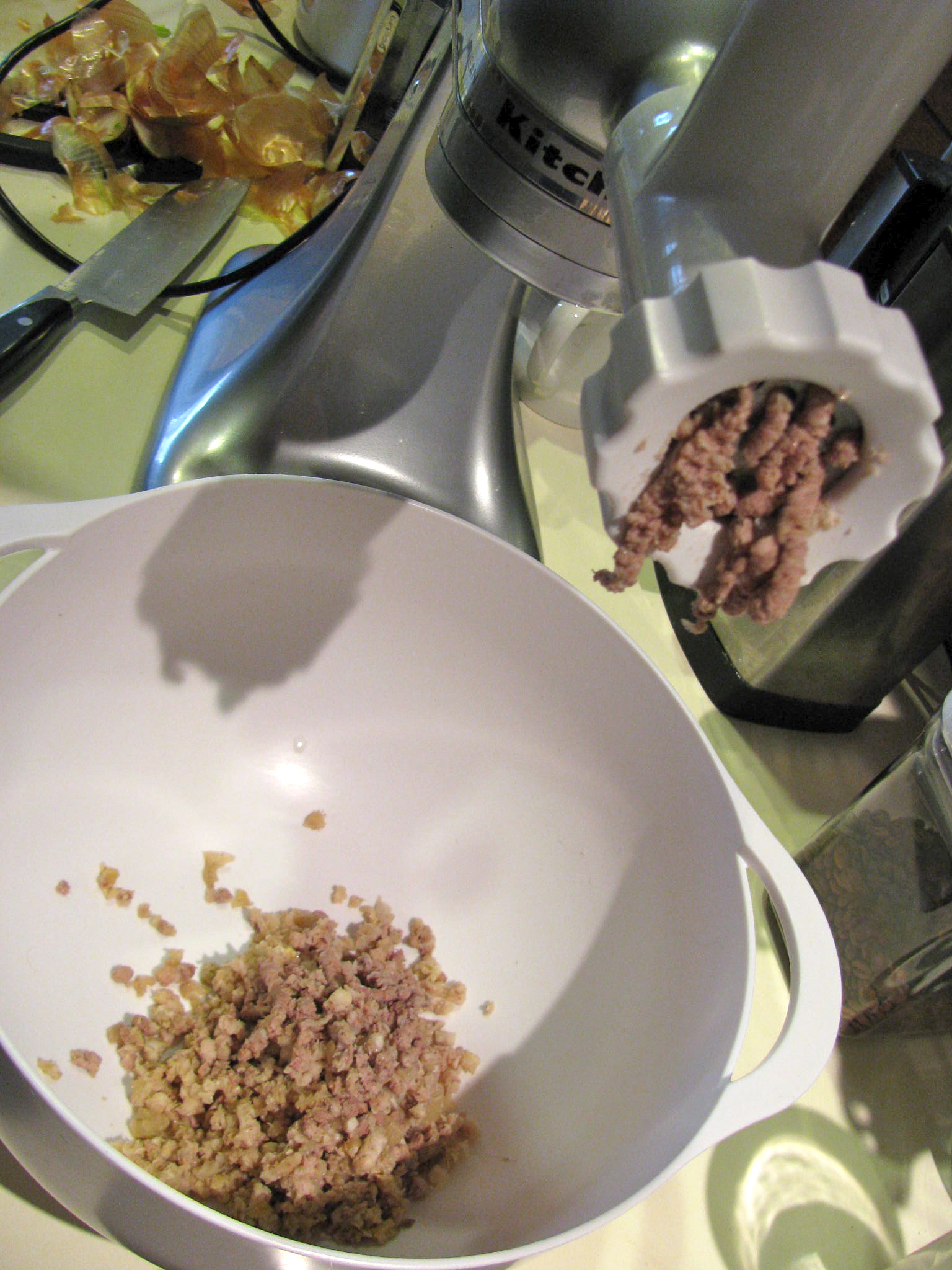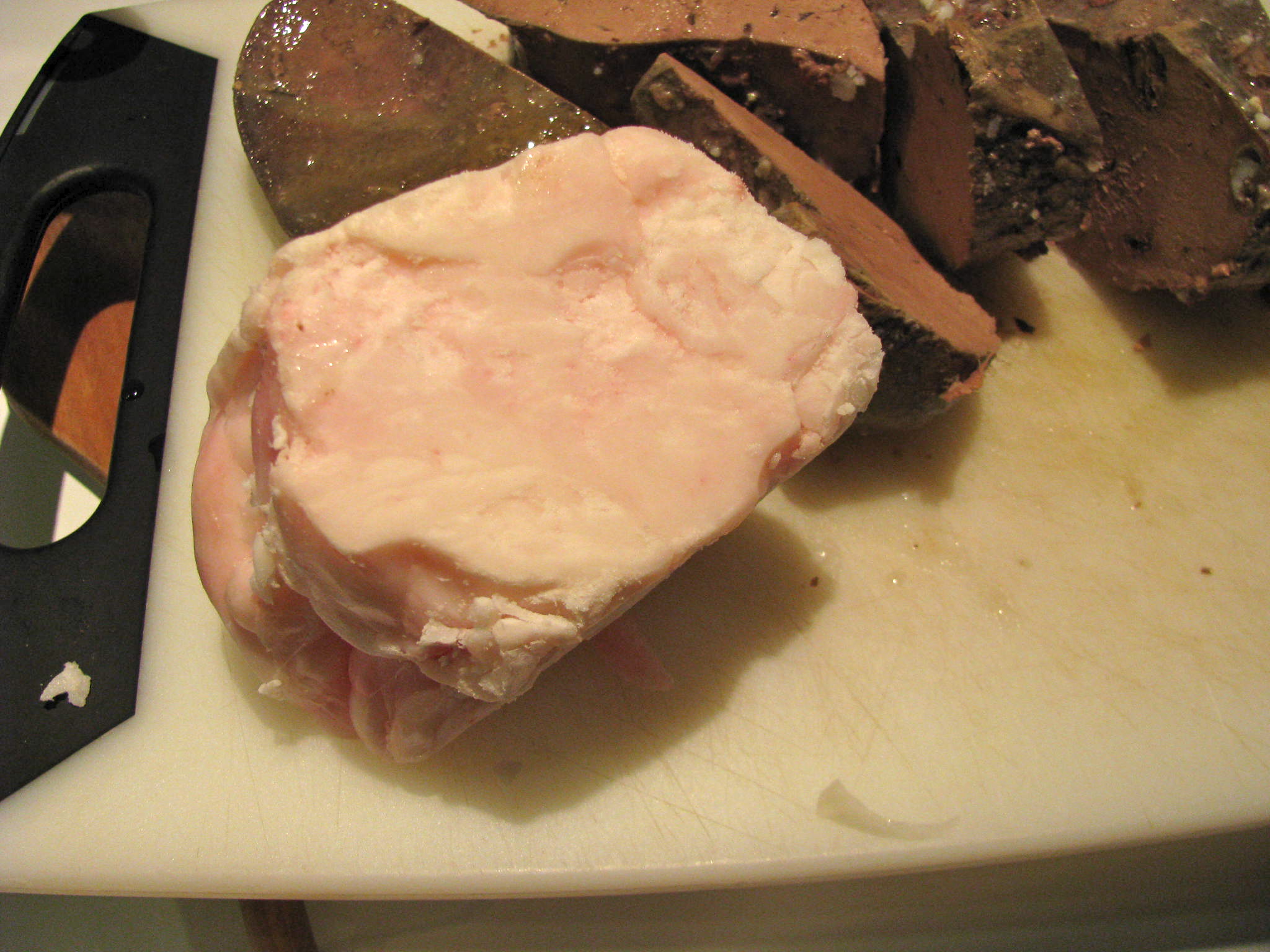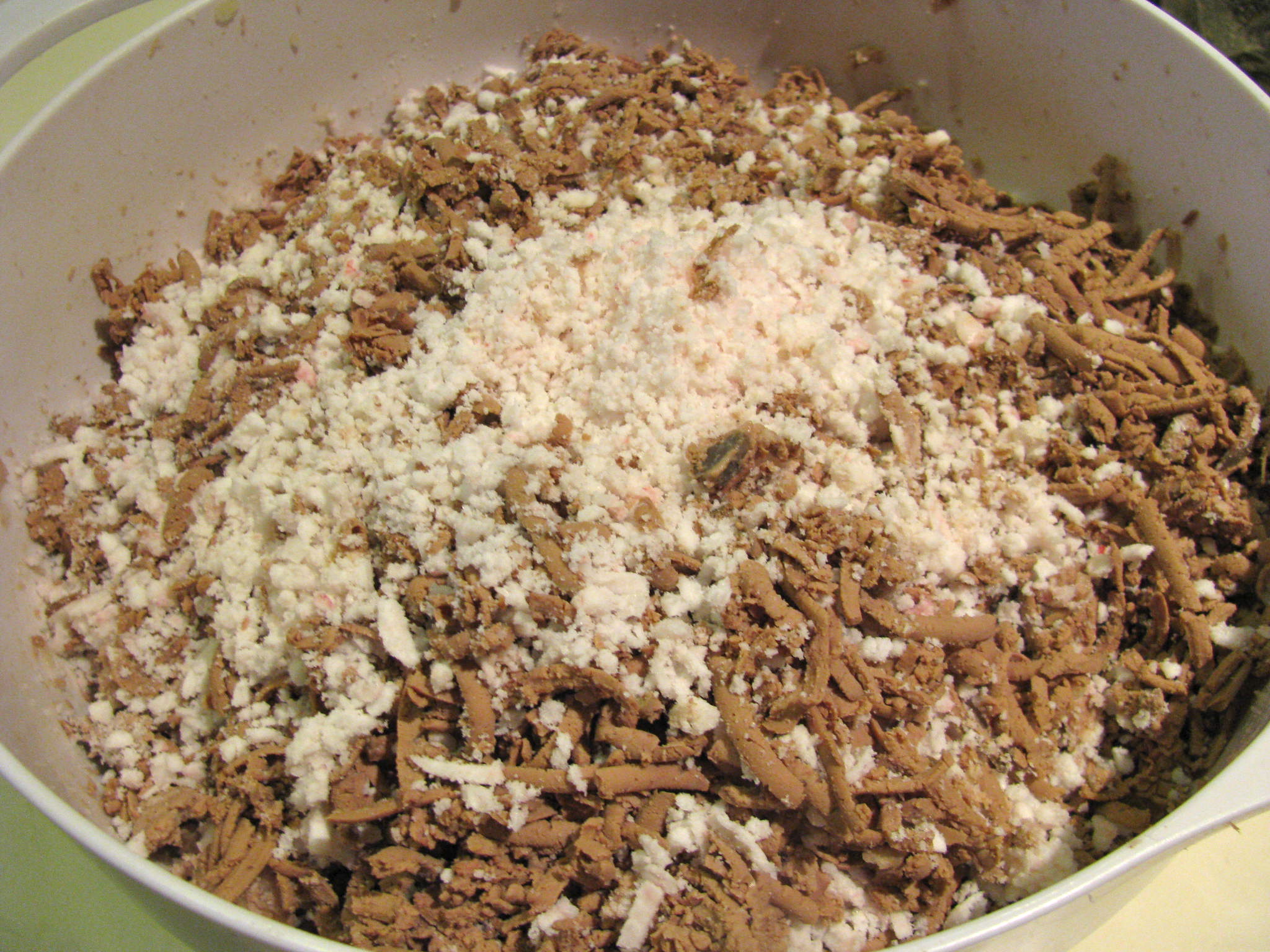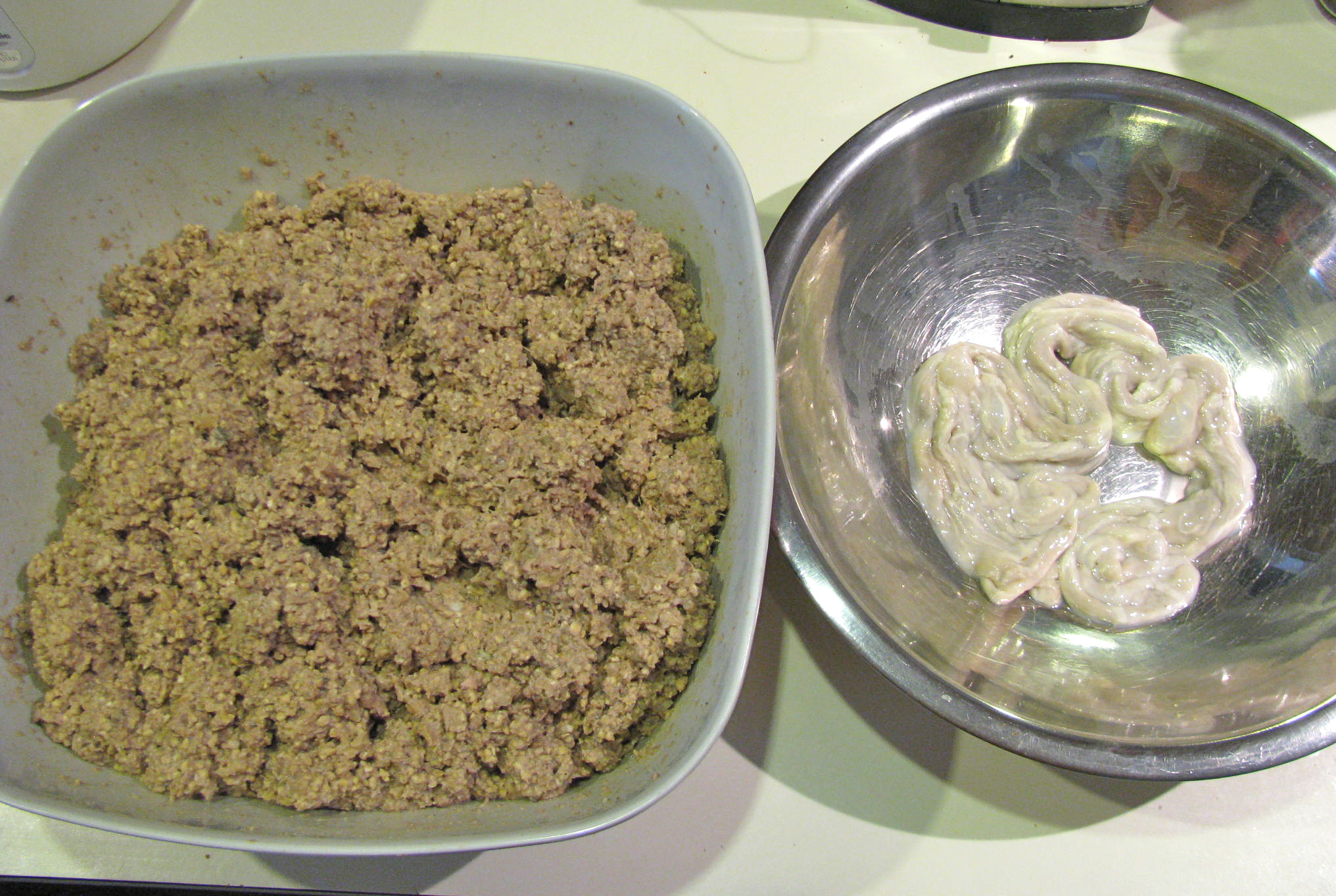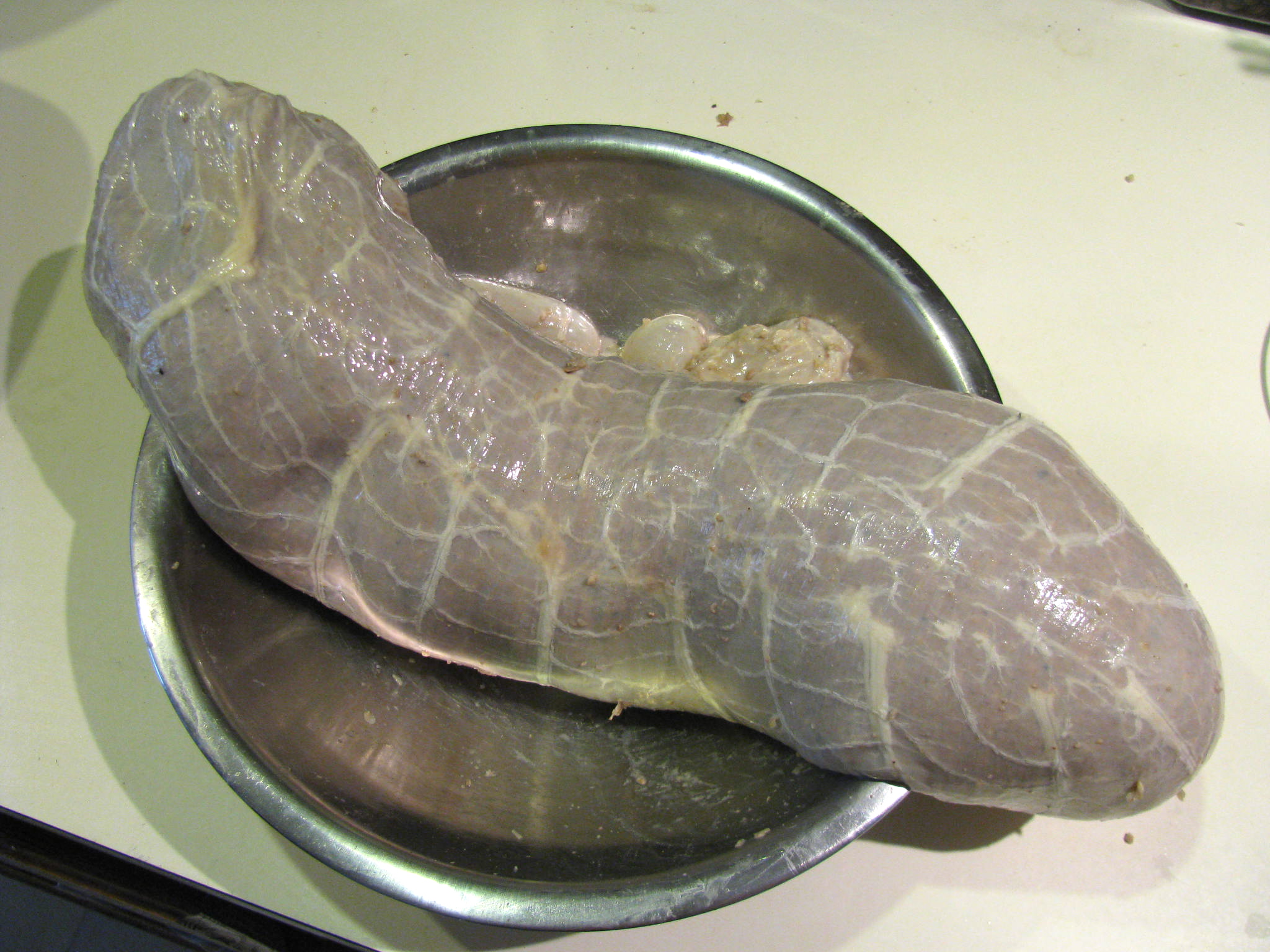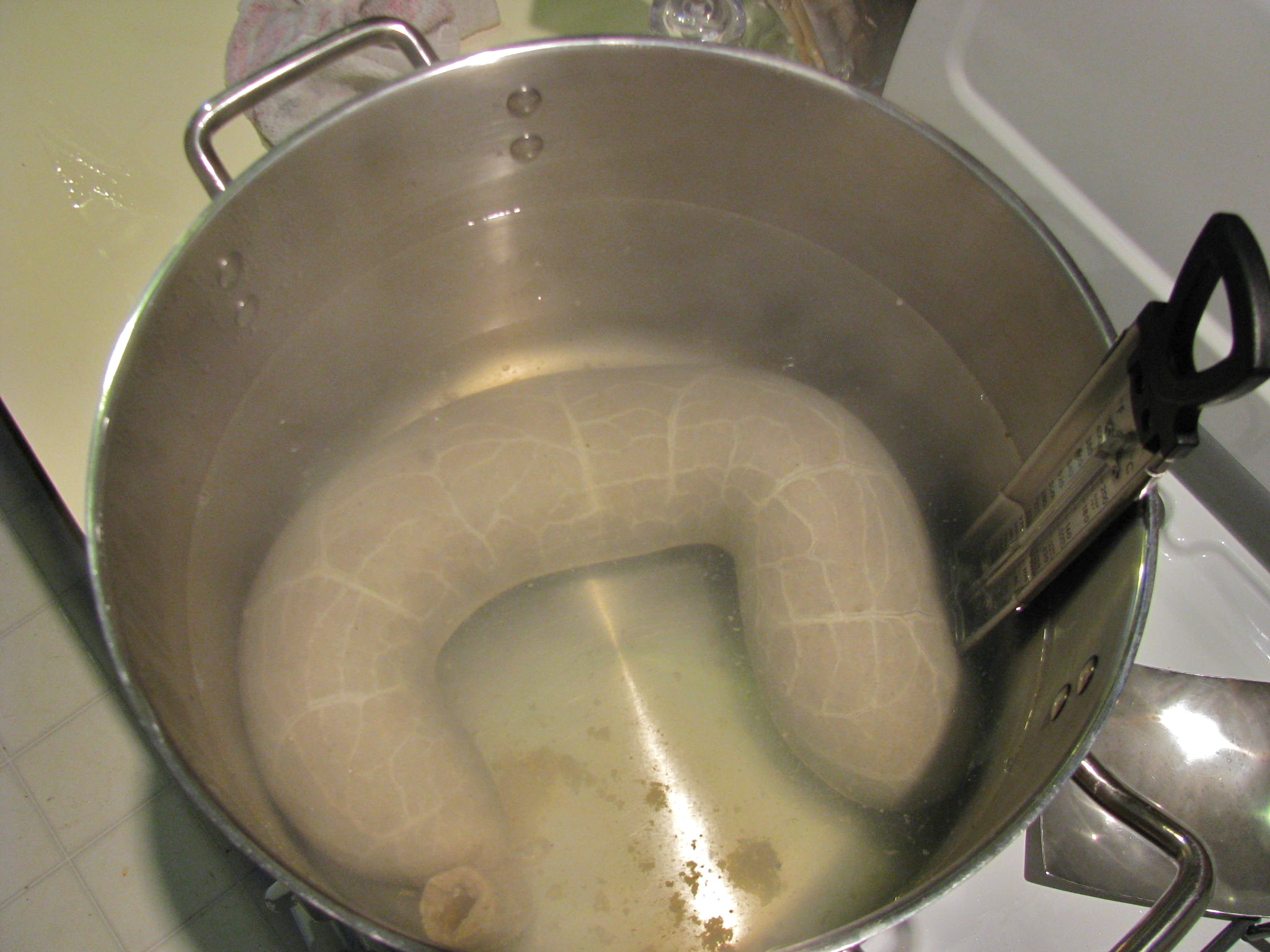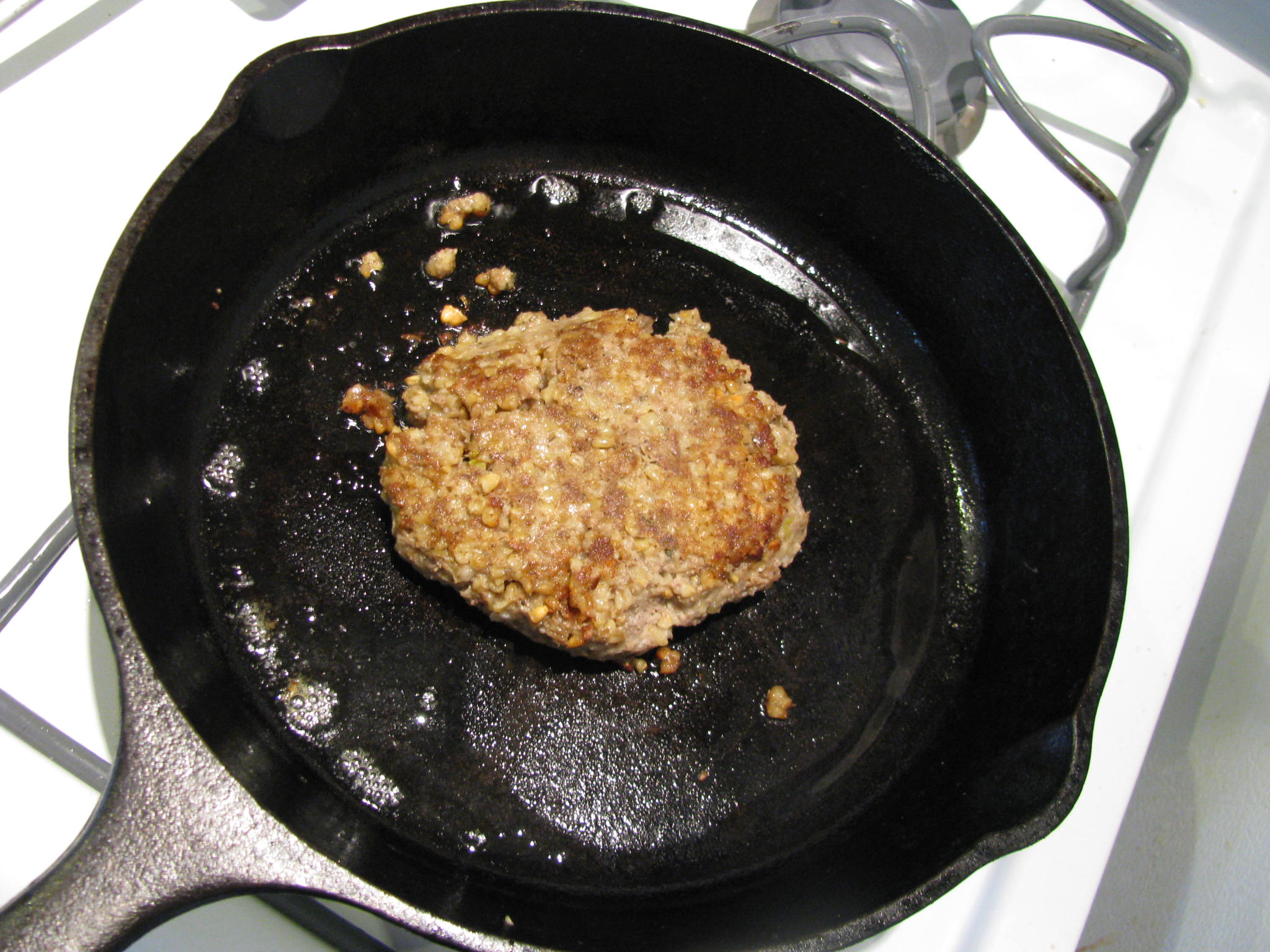A couple of years ago, around this time of year, I went to my local butchers Blues Creek Farm Meats at the North Market and asked if they sold haggis or if they knew anywhere I could buy it. I didn’t realize that imports of haggis were banned. They didn’t and suggested that I make my own. I laughed and dismissed the idea. I then discovered the Barley’s annual Burns Night Supper and for two years I satisfied my haggis cravings there. But, this year emboldened by the pig’s head project, I decided that if I could boil pig’s heads, I could damn well make my own haggis.
For the uninitiated, haggis is a Scottish delicacy. It is made of sheep’s offal, oatmeal, suet, onion and seasonings and is boiled and served with ‘neeps and tatties’ (mashed rutabaga and mashed potatoes) and liberal quantities of whisky. It is traditionally served at Burn’s Night Suppers on January 25th because Robert Burns, the bard of Scotland and a fan of the dish, wrote the poem ‘Address to a Haggis‘ calling it ‘great chieftan o’ the pudding-race!’ It is fairly similar to the Cincinnati speciality goetta but with more liver flavor.
Making your own haggis in the US is quite an endeavor. Traditional haggis recipes call for a sheep’s stomach and a sheep’s pluck (heart, lungs, windpipe and liver). Unfortunately it is impossible to buy a sheep’s stomach or lungs. Blues Creek were happy to supply me with the liver and heart but that was all they could offer. I did a lot of research, comparing recipes and looking for substitutions. Alton Brown used a tongue instead of the lungs, others used lamb shoulder. There was nothing conclusive. I decided to use a mixture of lamb trimmings for flavor and beef tripe, which seemed like it might be the closest in texture and not too strong in flavor. I was able to get tripe from La Plaza Tapatia (a large Mexican grocery store) where they had three different types on display.
The casing was still a problem. Many recipes suggested using ox bung (cow intestine) instead of a sheep’s stomach (even in the UK it seems sheep’s stomaches are hard to find), but Blues Creek couldn’t provide that either and for a while I planned to use some sort of fabric bag. One blog I read debated using a t shirt and then settled on haggis tamales, but despite my love of taco trucks this seemed too non-traditional for me. Fabric didn’t seem ideal as it is much more porous than a traditional casing, but the alternative, steaming it in a basin wasn’t great either. I heard rumors of pigs stomaches at an Asian grocery. But it was then that Albert from Thurn’s came to my rescue and supplied me with a beef bung cap to use as my casing. It’s amazing that one can get that excited about a cow intestine but really, I was.
The most useful resource I found was Tim Hayward’s step by step guide to making a haggis. I also used a BBC recipe and another step by step slideshow. In addition I consulted many other sources for advice on seasoning, cooking time and proportions. The main problem is that ‘plucks’ come in many different sizes and although recipes acknowledge this, they don’t give you any sense of proportion. Michael Ruhlman, where are you with a ratio when I really need you? For example, the BBC recipe told me to use between 1/2lb and 2lbs of oatmeal, without any guidance on how to decide how much. While I have eaten haggis many times, I have never seen the consistency of the mixture before it is stuffed.
With those caveats in mind here is my own step to step haggis making experience:
The day before you make the haggis, you need to boil the meat until all parts are tender and then leave them over night in their cooking liquid. Luckily there was room for my dutch oven in the fridge. Opinions seem to vary as to whether the water should be salted or not. I went with unsalted but next time would salt the water. The liver and heart were tender before the tripe, so I gave that extra time.
The next day you drain the meat and save the cooking liquid (which was quite gelatinous). I removed the hardened fat from the top of the pan as well. The tripe, trimmings and heart were minced along with 4 onions. We did a coarse grind to start and then put it all through again with the fine disc.
The liver and 1/2 lb suet (which also came from Blues Creek) are grated and then added to the rest of the meat.
The oats used are steel cut or pinhead oats and they are toasted in the oven until thoroughly dried out but not browned. I followed the BBC recipe 10 minutes at 350°F. I ended up using the whole bag which was 1 lb 8oz.
Then for the seasoning: Haggis is usually quite peppery in flavor so I added what seemed like a lot of salt and freshly ground pepper. Many of the recipes just called for a small quantity of dried herbs and traditional herbs seems to include marjoram, savory, sage, pennyroyal and thyme, but my research showed that spices are traditional as well and include mace, allspice and nutmeg. I also saw some recipes that called for cayenne and paprika, although I doubt that they are traditional. I didn’t have savory or pennyroyal but used everything else mentioned and a little rosemary.
The final step is adding some of the cooking liquid. Most recipes called for 1 pint even though they varied the amount of oats, so it was guesswork to decide whether to add more. I wasn’t sure what consistency I was aiming for. Despite my research and the number of recipes I had consulted the proportions of seasoning, oatmeal and liquid were still all guesswork.
Albert at Thurn’s had advised me to soak the cap in lukewarm water for about 10 minutes before I used it. The cap is sealed at one end with an opening at the other. It looks like a very large but slightly irregular condom, but with veins. When I looked at the stuffing it was hard to imagine that it would all fit inside but the casing wasn’t fragile and had a lot of give. Stuffing it was surprisingly easy and I have to admit to giggling to myself.
At this stage, I was pretty curious how much this monster haggis weighed. I tried it on the kitchen scales and they flashed the overload warning, so I placed the bowl on the bathroom scales. Approximately 10lbs! Everything I had read, said to fill the casing half full, so having established that all the stuffing would fit, I spread it out so that there was room for the oatmeal to expand. The recipes make you fearful of the casing bursting during cooking. I squeezed out as much air as I could and tied the open end up with kitchen string.
It was a good two feet long! Lucky I had borrowed a huge pig head sized pot to cook it in. I definitely could have made it into more than one haggis.
Albert had told me to keep the water at 170°F to help prevent bursting, so I heated up a few gallons of water and used my candy thermometer to keep a check on the temperature. I pierced the haggis twice with a skewer as advised, also I hoped to help prevent bursting. As soon as you put the haggis into the hot water the casing contracts and tightens around the filling. It’s quite amazing. I thought it would expand as the oatmeal cooked but that wasn’t really noticeable and I didn’t see any air bubbles. Phew, no burst haggis.
When one recipe tells you to cook it for 3 hours and the other an hour and a half, but neither tell you how to tell when it is cooked, there is a lot of head scratching involved. I used a thermometer to try and check the internal temperature but otherwise erred on the side of cooking it longer and then ended up keeping it warm for a while before we ate. I read that cooking time is based on diameter not mass, but without knowing how long for what diameter that didn’t really help.
And so the finished product: When you cut into the haggis the casing retracts, although not as dramatically as I had hoped.
So how was it? Overall, I was pleased with how it turned out. The filling wasn’t as dark in color as haggis’s I’ve had before and I can’t account for why, unless some people add blood, because I don’t think the lungs would make it a lot darker. It was tasty but a little under seasoned – I should have added more salt and pepper and also salted the water. I also think it was a little moister than some haggis I have had in the past and I’m not sure if this is because I added some extra liquid or because it was cooked for longer.
We made a pretty good dent in it, but there is plenty left over and so this morning I did some googling for leftover haggis recipes. There was a wealth of ideas ranging from deep fried haggis balls to tzatziki haggis wraps and haggis lasagne. It seems in Scotland they use it in burgers, macaroni and cheese and salads. It can also be used as a stuffing, in omelettes and something called Scottish tacos!
I added salt and pepper, formed some haggis into a patty and fried it up like goetta. Wow! It was so good – better than goetta. Crispy oatmeal popping in the pan, a crunchy crust and the still moist meaty center.
Maybe next year I’ll be able to buy my haggis, or maybe I’ll make it again with the lessons learned, but for now I’m enjoying the leftovers. Here’s to ‘Rabbie Burns’!



